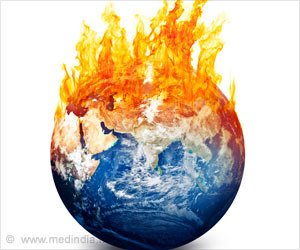Global Warming Makes New Antarctic Extremes More Common

The past decade has seen a great awareness of increases in the size and frequency of extreme environmental events across a variety of global settings, and the associated consequential damage to lives and livelihoods.
While much attention has been given to weather-driven events such as heatwaves and rainfall elsewhere in the world, there is yet to be as great an appreciation of the occurrence and impact of extreme events in Antarctica.
Here, researchers open a discussion of Antarctic Extreme Events, focusing on their records across a variety of realms (ocean, atmosphere, cryosphere, biosphere, etc.), indicating their likely causes and suggesting how they may change in the future().
Advertisement
The study concludes that Antarctica’s fragile environments “may well be subject to considerable stress and damage in future years and decades” – and calls for urgent policy action to protect it.
Rapid changes now happening in Antarctica could place many countries in breach of an international treaty. Signatories to the Antarctic Treaty (including the UK, USA, India, and China) pledge to preserve the environment of this remote and fragile place.
Nations must understand that by continuing to explore, extract and burn fossil fuels anywhere in the world, the environment of Antarctica will become ever more affected in ways inconsistent with their pledge.
Extreme events can also affect biodiversity. For example, high temperatures have been linked to years with lower krill numbers, leading to breeding failures of krill-reliant predators – evidenced by many dead fur seal pups on beaches.
These results show that while extreme events are known to impact the globe through heavy rainfall and flooding, heatwaves, and wildfires, such as those seen in Europe this summer, they also impact the remote polar regions.
Antarctic glaciers, sea ice, and natural ecosystems are all impacted by extreme events. Therefore, international treaties and policies must be implemented to protect these beautiful but delicate regions.
Antarctic sea ice has been grabbing headlines in recent weeks, and this paper shows how sea ice records – first record highs but, since 2017, record lows – have been tumbling in Antarctica for several years().
On top of that, there are deep interconnections between extreme events in different aspects of the Antarctic physical and biological system, almost all of them vulnerable to human influence in some way.
The retreat of Antarctic Sea ice will make new areas accessible by ships, and the researchers say careful management will be required to protect vulnerable sites.
Understanding and predicting extreme events in Antarctica requires international scientific collaboration. As extreme events become more likely, the need to assess their consequences is increasingly urgent.
Antarctic change has global implications and, as we have discussed, the effects of human influences on Antarctica are increasingly apparent within the contexts of both global heating and direct interventions.
Reducing greenhouse gas emissions to net zero is our best hope of preserving Antarctica, and this must matter to every countryand individualon the planet.
References:
- Siegert Martin et al. Antarctic extreme events. Frontiers in Environmental Science. Sec. Interdisciplinary Climate Studies. 2023.( https://www.frontiersin.org/articles/10.3389/fenvs.2023.1229283/full)
- Thompson, David WJ, et al. Signatures of the Antarctic ozone hole in Southern Hemisphere surface climate change. Nature geoscience 4.11 (2011): 741-749.(https://www.nature.com/articles/ngeo1296)
- Sylvester, Zephyr T., and Cassandra M. Brooks. Protecting Antarctica through co-production of actionable science: Lessons from the CCAMLR marine protected area process. Marine Policy 111 (2020): 103720.(https://www.sciencedirect.com/science/article/abs/pii/S0308597X19305354)
Source: Eurekalert
Source link
#Global #Warming #Antarctic #Extremes #Common



